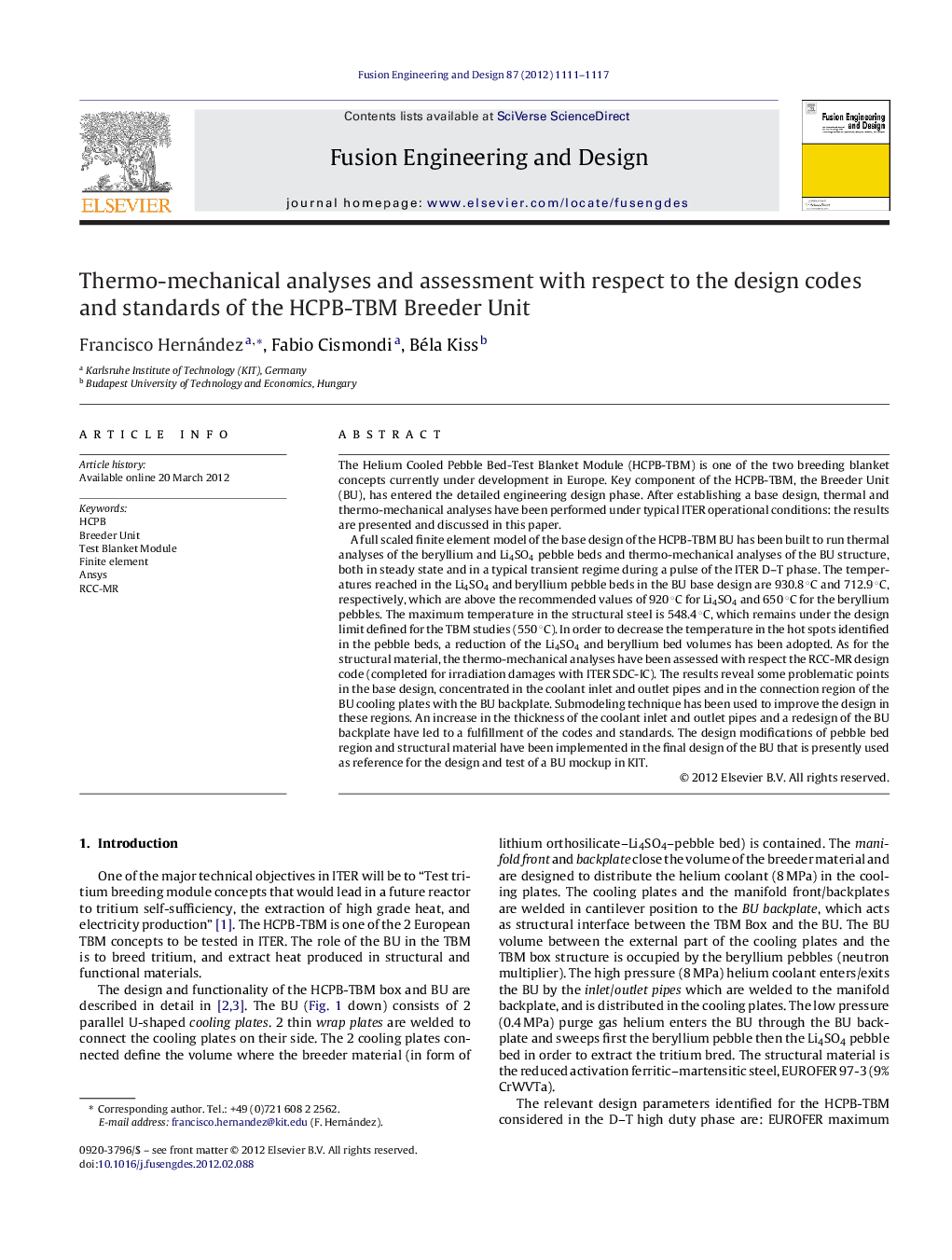| کد مقاله | کد نشریه | سال انتشار | مقاله انگلیسی | نسخه تمام متن |
|---|---|---|---|---|
| 272044 | 505011 | 2012 | 7 صفحه PDF | دانلود رایگان |

The Helium Cooled Pebble Bed-Test Blanket Module (HCPB-TBM) is one of the two breeding blanket concepts currently under development in Europe. Key component of the HCPB-TBM, the Breeder Unit (BU), has entered the detailed engineering design phase. After establishing a base design, thermal and thermo-mechanical analyses have been performed under typical ITER operational conditions: the results are presented and discussed in this paper.A full scaled finite element model of the base design of the HCPB-TBM BU has been built to run thermal analyses of the beryllium and Li4SO4 pebble beds and thermo-mechanical analyses of the BU structure, both in steady state and in a typical transient regime during a pulse of the ITER D–T phase. The temperatures reached in the Li4SO4 and beryllium pebble beds in the BU base design are 930.8 °C and 712.9 °C, respectively, which are above the recommended values of 920 °C for Li4SO4 and 650 °C for the beryllium pebbles. The maximum temperature in the structural steel is 548.4 °C, which remains under the design limit defined for the TBM studies (550 °C). In order to decrease the temperature in the hot spots identified in the pebble beds, a reduction of the Li4SO4 and beryllium bed volumes has been adopted. As for the structural material, the thermo-mechanical analyses have been assessed with respect the RCC-MR design code (completed for irradiation damages with ITER SDC-IC). The results reveal some problematic points in the base design, concentrated in the coolant inlet and outlet pipes and in the connection region of the BU cooling plates with the BU backplate. Submodeling technique has been used to improve the design in these regions. An increase in the thickness of the coolant inlet and outlet pipes and a redesign of the BU backplate have led to a fulfillment of the codes and standards. The design modifications of pebble bed region and structural material have been implemented in the final design of the BU that is presently used as reference for the design and test of a BU mockup in KIT.
► The thermo-mechanics of a preliminary design of a HCPB-TBM Breeder Unit has been analyzed and assessed.
► Thermal field of the steel structure is under design limits, whereas the pebble beds are above: a reduction of the pebble bed volumes is needed to reduce nuclear heating.
► The structural analyses reveal problems in the inlet/outlet pipes and cooling plates, according to RCC-MR and SDC-IC codes.
► An increase of the thickness of the pipes and a redesign of the BU backplate lead to a fulfillment of the codes.
Journal: Fusion Engineering and Design - Volume 87, Issues 7–8, August 2012, Pages 1111–1117